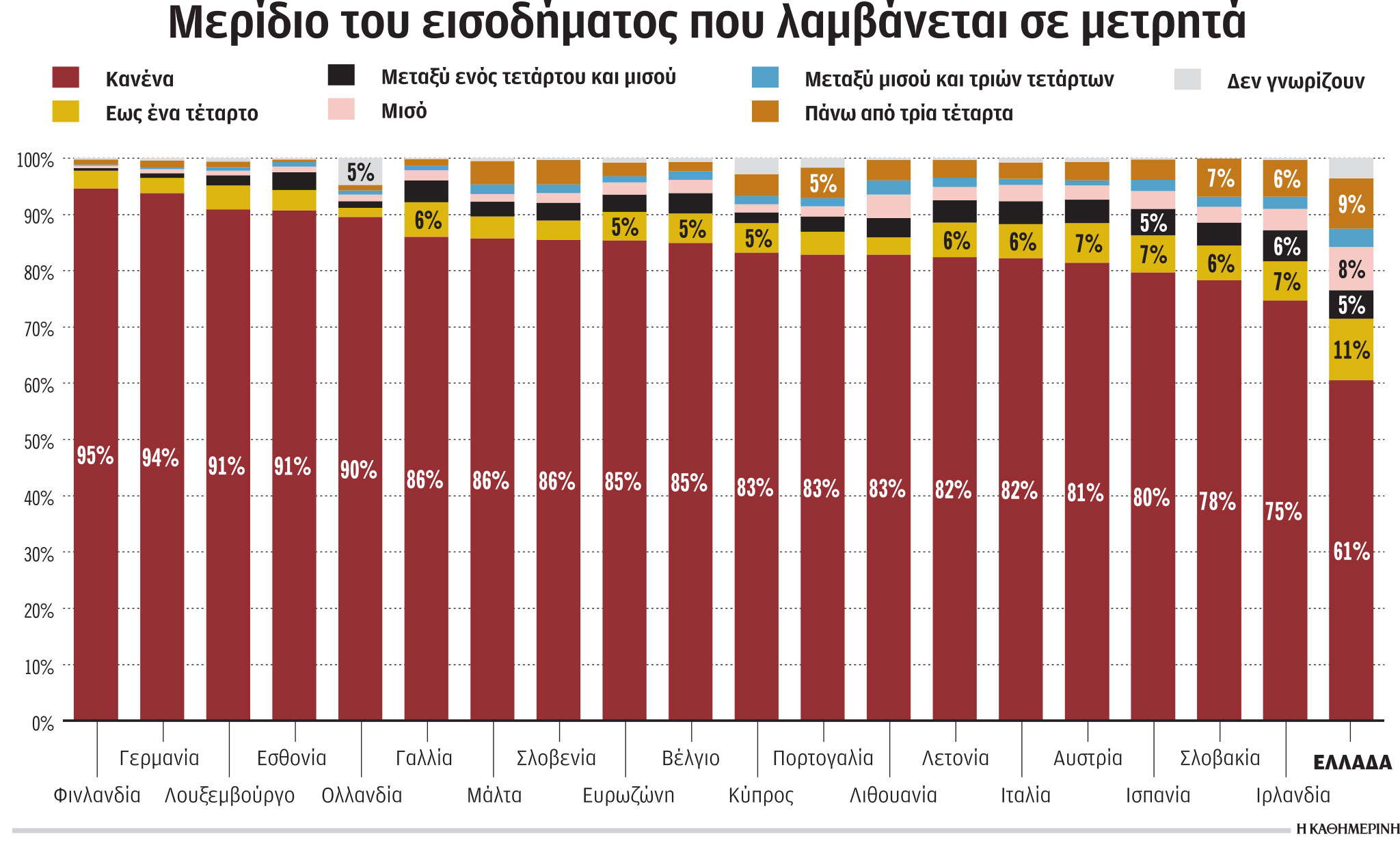
Every third Greek receives from one to three quarters of his income in cashspeed, which is the highest in Eurozone and indirectly “photographs” a vast tax avoidance what is in our country. This follows from ECB study payment trends of European citizens, according to which cash, although decreasing due to the spread electronic transactionsare still the dominant means of payment in the Eurozone.
The share of electronic payments in Greek consumer transactions increased, according to the ECB, from 7% in 2019 to 19% in 2022 in terms of the number of transactions and from 11% to 27% in terms of the amount of transactions. At the same time, however, Greece represents an “extreme case” according to the ECB, as 11% of its residents say they receive up to a quarter of their income in cash.
This is almost double the Eurozone average of 5%, while 8% of those who say they get half their income in cash and 9% of those who say they get more than three-quarters of their income in cash. A total of 33% of Greeks (up to 39%, including those who say they don’t know) answer that they receive between 1/4 and 3/4 of their income in cash, the highest figure in the Eurozone, which the corresponding percentage fluctuates from 5% to 25%. The lowest percentage of citizens who are paid in cash is in Finland, where only 5% say they receive part of their income in cash.
The Greeks met card usage as a 50% preferred means of payment for point-of-sale (POS) transactions. But they also want to have a choice of cash at a rate of 24%, which is close to the Eurozone average of 22%. The average amount available in their wallet when they start their day is around €78 compared to €83, which is the eurozone average, with variations from the €121 the average Austrian wants to have to the €46 he wants to have . average dutch.
The ECB’s survey on consumer attitudes towards paying in the euro area (Survey of consumer attitudes towards paying in the euro area – SPACE) began in 2021 and ended in 2022, and its results were compared with the results of the survey conducted in 2019 and 2016. The findings of the study confirm the growth of electronic payments, which was observed in all countries of the eurozone and was accompanied by a parallel decline in cash. Specifically:
• Cash was used for 59% of transactions compared to 79% in 2016 and 72% in 2019.
• Cash is still a popular means of payment, mainly because of the anonymity it provides, and it is considered an alternative method because of the better control over money that its holders feel it provides.
This is the highest percentage in the Eurozone.
• 37% of European citizens tend to keep money outside the bank, up from 34% registered in 2019.
• The share of online payments increased from 6% to 17% in 2022 and was carried out mainly through direct payments and account-to-account transfers.
• Cards were used for 34% of point-of-sale (POS) transactions, up from 19% in 2016 and 25% in 2019.
• The share of mobile payments increased from less than 1% in 2019 to more than 3% in 2022.
• Card transactions surpassed cash transactions in terms of transaction value, with 22% accounting for 46% compared to 42% for cash.
• The share of contactless transactions in high demand during the pandemic increased from 41% in 2019 to 62% in 2022.
• Cash remains the dominant medium in P2P transactions, but its share in total volume has fallen from 86% in 2019 to 73% in 2022 and from 65% to 59% in value terms.
• The share of mobile payments in P2P has tripled over the same period from 3% to 10%, and in value terms from 4% to 11% in 2022.
Source: Kathimerini
Lori Barajas is an accomplished journalist, known for her insightful and thought-provoking writing on economy. She currently works as a writer at 247 news reel. With a passion for understanding the economy, Lori’s writing delves deep into the financial issues that matter most, providing readers with a unique perspective on current events.